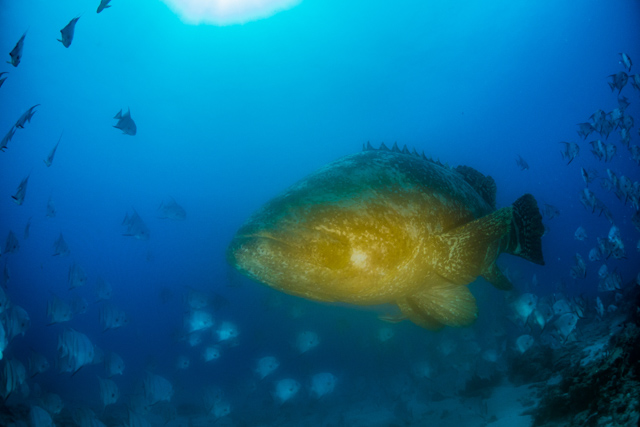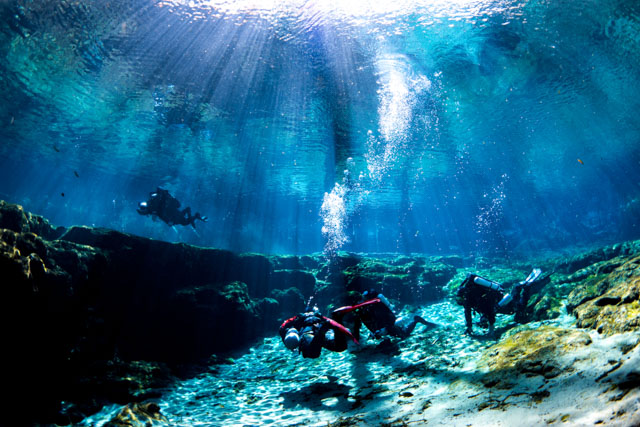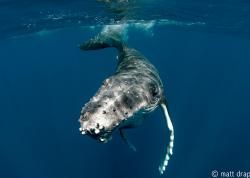A Photographer's Journey with the Sony RX100 V
A Note From the Editor
The Sony RX100 V has established itself as one of the best compact camera systems currently on the market. Its excellent dynamic range, auto-focus, and overall image quality makes it a promising tool when put into the right hands. After reaching out to our dedicated readers and customers, we managed to find an individual who's hands certainly put this camera to good use. Jin Woo Lee, a college student from Florida, astounded us with the results he has managed to obtain from his first underwater camera - the RX100 V. In this article he talks about his journey to becoming the photographer he is today and his mindset through the learning process. - Nirupam Nigam (Managing Editor)
Check out our full review of the Sony RX100 V here!
The Journey Begins
My dream to become a marine biologist began with childhood trips to the aquarium in the heart of Seoul, Korea. My parents were very supportive of my passion, and bought me a fish tank while in elementary school where I would watch clownfish, blue tangs, blennies, etc., - an ocean in our living room. By middle school, I got my scuba diving certification in South Korea in the cold, 50 °F (10 °C) water.
My first significant dive experience was in Key Largo, Florida, at the start of college. All I could say was “wow!” Afterwards I made the decision to go to Jardines de la Reina, or the Gardens of the Queen, in Cuba rather than going back to Korea for spring break – the greatest decision of my life. I had not seen so many sharks underwater before. Not to mention a crocodile! After a subsequent trip to Komodo National Park in Indonesia, I realized the GoPro’s limitations for capturing macro life and began to think about getting an underwater camera.
Choosing the Right Camera
I spent a long time in choosing my camera. Due to my limited budget and knowledge of underwater photography, I decided to look into compact cameras rather than a fancy or huge DSLR or mirroless. Initially I rented an Olympus TG-5 and loved its macro capability. The first time I took underwater photos, I won 3rd place in a small underwater photography competition by Olympus in South Korea with the award being a brand-new TG-5. However, my preferences changed when one day I saw an underwater video from Mexico taken with the Sony RX100 V. It was clear from the video that the performance of the TG-5 was no match for the RX100 V. To this date, I am an RX100 V user and satisfied with its ability.
Learning the Basics
Since I got my camera, I have gone on multiple scuba trips. From Blue Springs to Revillagigedo, I have taken my camera on every dive since last September. My photography has primarily been of large creatures. Underwater photography was a challenge at first. I started by copying setting from online that resulted in dark photos. I had no idea what ISO, F-stop, and shutter speed was. I spent months taking photos, changing my settings until I realized the interaction between each of these elements. Sometime a change of settings resulted in a nice photo that I never expected; sometimes a failed photo is a lesson for the next dive trip! Through this method of trial and error, I could feel my skills getting better and better with each dive.
Lighting and Lenses
Underwater lighting is critical in underwater photography. When I started I only used one strobe, which was not enough light. I had to position my strobe inward which created a lot of backscatter. After I got another strobe, I could finally get nice color in my shot and reduce the backscatter by positioning the strobes outward. Sometimes I even find that strobes are not necessary – especially in shallow water or while blue water diving when the subject is too far away.
I currently use the UWL-H100 lens (land and underwater wide conversion lens) from Inon. Although I don’t have experience with other lenses, I think the UWL-H100 works fine with the RX100 V. The center of the frame is sharp, however the corners can get a bit blurry. Also, you can’t zoom out with the RX100 V below a 29mm focal point as vignetting occurs between 24mm and 29mm.
Post-Processing
Post-processing is also a necessary step of underwater photography. For me, it was a huge struggle to use Lightroom for the first time. However, after watching numerous videos and reading articles, I gradually improved my post-processing skills. I focus on correcting color and giving my images more depth.
The Learning Curve
Not every dive has been perfect with my camera – sometimes I can make some pretty big mistakes. It’s part of the learning process. During my last trip in Jupiter, Florida, I forgot to dry the lens before putting it into the housing after cleaning it with cleaning spray. As soon as I went down and turned on my camera, I realized my lens was covered with vapor! I missed a couple of perfect opportunities… One time in Revillagigedo, I removed my lens cap and realized my housing was empty. Or course, there were plenty of playful mantas on that dive and they were gone by the next dive when I had my camera in the housing.
Overall, I truly enjoying my hobby of underwater photography. It connects me to nature that I had only seen in documentaries. Even though I never had a passion for photography before, underwater photography has changed my life. I’m always thinking about what pictures I should take and where I should go. My next trip will be to the Ogasawara Islands, Japan will be to photograph sand tiger sharks, dolphin, and tuna. I already know what I’m going to bring with me: passion, gear, and a bit of luck.
![]()
The Sony RX100 V is available now at Bluewater Photo!
RECOMMENDED ARTICLES
SUPPORT THE UNDERWATER PHOTOGRAPHY GUIDE:
The Best Service & Prices on u/w Photo Gear
 Visit Bluewater Photo & Video for all your underwater photography and video gear. Click, or call the team at (310) 633-5052 for expert advice!
Visit Bluewater Photo & Video for all your underwater photography and video gear. Click, or call the team at (310) 633-5052 for expert advice!
The Best Pricing, Service & Expert Advice to Book your Dive Trips
 Bluewater Travel is your full-service scuba travel agency. Let our expert advisers plan and book your next dive vacation. Run by divers, for divers.
Bluewater Travel is your full-service scuba travel agency. Let our expert advisers plan and book your next dive vacation. Run by divers, for divers.









































